By Heather McNeill
It doesn't look like much, but a 1.7 kilogram rock discovered by a team from Curtin University on New Year's Eve could help solve the mystery of how the solar system was created.
The meteorite, estimated to be 4.5 billion years old, is older than earth itself and one of just 20 in the world recovered after being tracked entering the earth's orbit.
It was found buried half a metre in the ground at Lake Eyre in South Australia by a team from Curtin University's Desert Fireball Network, which spent an exhausting three days trekking through the remote lake's mud looking for it.
Curtin University Professor Phil Bland said the meteorite first entered the earth's atmosphere on November 27 as an 80 kilogram fireball travelling at 14 kilometres a second.
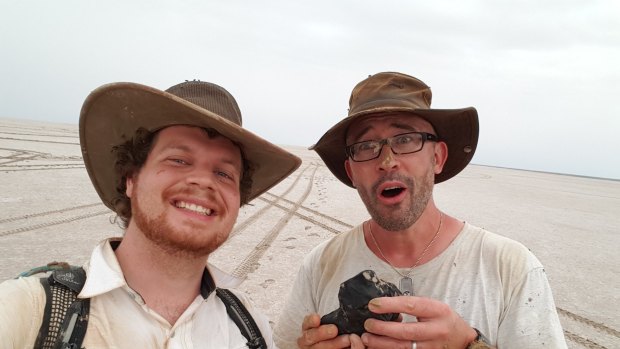
PhD student Robert Howie and Professor Phil Bland after digging the meteorite out of the ground. Credit: Curtin University
His team then studied its trajectory, caught on five of its remote cameras across Western Australia and South Australia, and narrowed the area where it landed to a one-kilometre search zone.
It is the first meteorite the team have found since starting the fireball project a year ago, with the group of 10, many who are PHD students, clearly elated by the discovery.
"[On day three of the search] we were getting more and more depressed thinking, 'ok we're not going to be able to spot this thing' and then [a team member overhead in a plane] said I've seen it, I've seen it," Professor Bland said.
"I was running across this mud trying to get to the spot where he yelled out, then they were circling again and we were thinking 'oh no, they've lost it'.
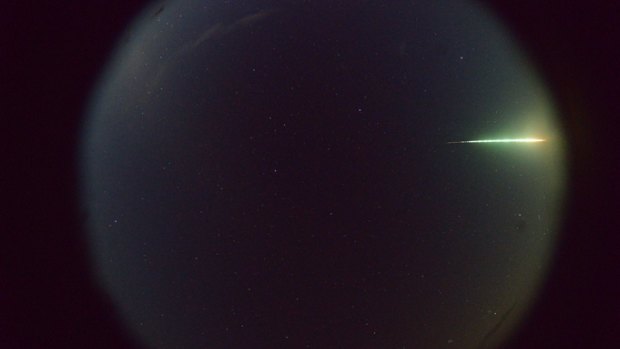
An image of the streaking meteorite.
"We finally saw it and started digging... I basically shredded my hands trying to get it out."
Desert Fireball Network team member Robert Howie said the discovery of the meteorite, believed to have originated from between Mars and Jupiter, was extremely rare.
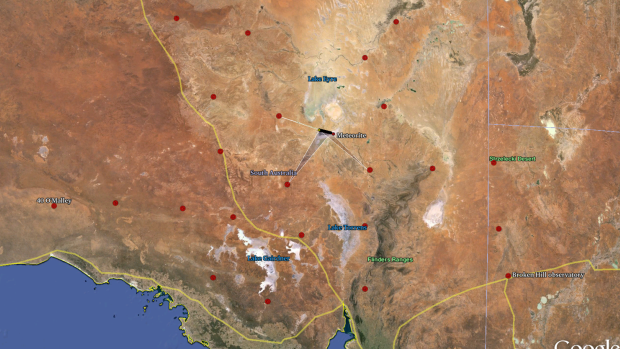
The meteorite started out between Mars and Jupiter and ended up in remote South Australia.
"There are about 50,000 meteorites in museum collections but only about two dozen with accurate orbits because they've been captured on a camera orbit – so every new one of them is really, really precious," he said.
"You can interpret the results a lot more if you know where in the solar system its came from.
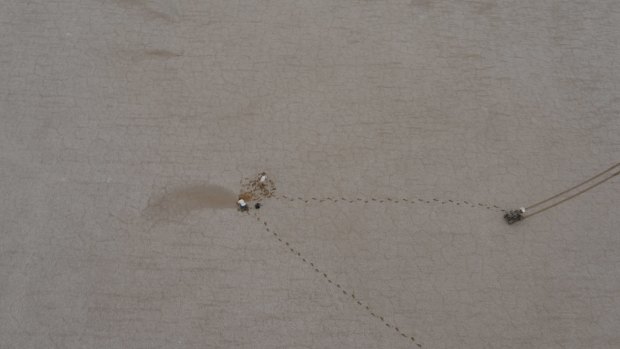
An aerial shot of the meteorite being dug out the ground. Credit: Curtin University.
"Phil's favourite analogy is it's like having a bucket of rocks in your backyard - if you don't know where they came from you can't really do much, but if you know exactly which part of Australia they come from you can start to reconstruct that geological picture.
"There are a bunch of unanswered questions about the formation of the solar system.. . the more meteorites we can get with orbits the closer we can come to maybe answering some of those questions, even about the formation or the creation of life on earth."
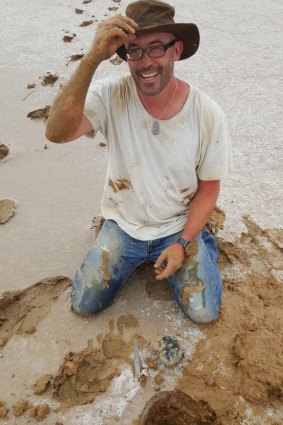
Phil Bland with the hole from which the meteorite was plucked.Credit: Curtin University
The cameras used to capture the meteorite were designed from a standard off-the-shelf Nikon camera and cost around $4500 each.
Professor Bland said the camera network, developed by his team, was significantly cheaper than other methods used by international space researchers.
"If we're lucky, we can pinpoint exactly the asteroid that [the meteorite] came from and that's a big deal because space agency like NASA... will spent $1 billion trying to get to an asteroid and bring a sample back," he said.
The meteorite will be named by the local Arabana people who live near Lake Erye and helped searchers navigate the area.